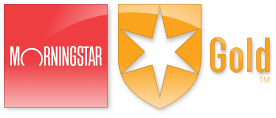Ultra Short Bond Fund
Overview
The Fund is managed through a duration-neutral, risk-controlled approach with a strong emphasis on the long-term perspective. The investment objective of the Fund is to seek current income consistent with preservation of capital. The Fund’s benchmark is the Bloomberg U.S. Short-Term Government/Corporate Index. The Fund normally invests at least 80% of its net assets in the following types of U.S. dollar-denominated debt securities:
- U.S. government and other public-sector entities
- Asset-backed and mortgage-backed obligations of U.S. and foreign issuers
- Corporate debt of U.S. and foreign issuers
- Money market instruments
The Fund invests primarily in investment-grade debt securities, but may invest up to 10% of its net assets in non-investment-grade securities.
Awards
Morningstar Medalist RatingTM

Analyst-Driven %: 100%
Data Coverage %: 100%
The Baird Ultra Short Bond Fund (Institutional Class) received a Gold Morningstar Medalist Rating.™ The Fund’s Investor Share Class received a Gold Morningstar Medalist Rating.™
Performance
| 1 Month | 3 Month | YTD | 1 Year | 3 Years | 5 Years | 10 Years | Since Inception | |
|---|---|---|---|---|---|---|---|---|
| Ultra Short Bond Fund | 0.47 | 1.19 | 2.40 | 5.30 | 5.06 | 3.05 | 2.42 | 2.25 |
| Bloomberg Short-Term U.S. Government/Corporate Index | 0.39 | 1.04 | 2.16 | 4.99 | 4.58 | 2.70 | 2.12 | 1.87 |
Morningstar Ratings
| Category | Overall | 3 Year | 5 Year | 10 Year | |
|---|---|---|---|---|---|
| Ultra Short Bond Fund | Ultrashort Bond |
(211 funds)
|
(211 funds)
|
(187 funds)
|
(112 funds)
|
Distributions
| Type | Record Date | Reinvest Date | Payable Date | Amount per Share ($) | Reinvest Price ($) |
|---|---|---|---|---|---|
| Income | 6/23/2025 | 6/24/2025 | 6/25/2025 | 0.03751101 | 10.11 |
| Income | 5/23/2025 | 5/27/2025 | 5/28/2025 | 0.03639066 | 10.11 |
| Income | 4/24/2025 | 4/25/2025 | 4/28/2025 | 0.03543339 | 10.10 |
| Income | 3/26/2025 | 3/27/2025 | 3/28/2025 | 0.03817809 | 10.11 |
| Income | 2/25/2025 | 2/26/2025 | 2/27/2025 | 0.03789918 | 10.11 |
| Income | 1/27/2025 | 1/28/2025 | 1/29/2025 | 0.03507725 | 10.11 |
| Income | 12/26/2024 | 12/27/2024 | 12/30/2024 | 0.06708099 | 10.10 |
| Income | 11/26/2024 | 11/27/2024 | 11/29/2024 | 0.04483825 | 10.12 |
| Income | 10/24/2024 | 10/25/2024 | 10/28/2024 | 0.04255732 | 10.12 |
| Income | 9/23/2024 | 9/24/2024 | 9/25/2024 | 0.04280874 | 10.14 |
| Income | 8/23/2024 | 8/26/2024 | 8/27/2024 | 0.04365665 | 10.12 |
| Income | 7/24/2024 | 7/25/2024 | 7/26/2024 | 0.04221086 | 10.10 |
| Income | 6/24/2024 | 6/25/2024 | 6/26/2024 | 0.04289216 | 10.09 |
| Income | 5/24/2024 | 5/28/2024 | 5/29/2024 | 0.04353559 | 10.09 |
| Income | 4/24/2024 | 4/25/2024 | 4/26/2024 | 0.04188704 | 10.08 |
| Income | 3/25/2024 | 3/26/2024 | 3/27/2024 | 0.04577611 | 10.08 |
| Income | 2/23/2024 | 2/26/2024 | 2/27/2024 | 0.04189066 | 10.08 |
| Income | 1/25/2024 | 1/26/2024 | 1/29/2024 | 0.03672646 | 10.08 |
Portfolio Characteristics
| Fund Information | Fund | Index |
|---|---|---|
| *30-Day SEC Yield (%) | 4.54 | N/A |
| **Portfolio Avg. Yield to Worst (%) | 4.61 | 4.32 |
| Effective Duration (Years) | 0.53 | 0.54 |
| Effective Maturity (Years) | 0.56 | 0.55 |
| Average Coupon (%) | 3.41 | 2.98 |
| Annual Turnover Rate (%) | 95.30 | N/A |
| Number of Holdings | 369 | 818 |
| Average Portfolio Quality | A+ | AA |
| Quality Profile | Fund | Index |
|---|---|---|
| U.S. Treasury | 30.5% | 75.8% |
| U.S. Agency | 0.0% | 2.9% |
| AAA | 18.0% | 0.2% |
| AA | 0.8% | 2.3% |
| A | 15.9% | 10.4% |
| BBB | 34.4% | 8.5% |
| Below BBB | 0.4% | 0.0% |
| Not Rated | 0.0% | 0.0% |









